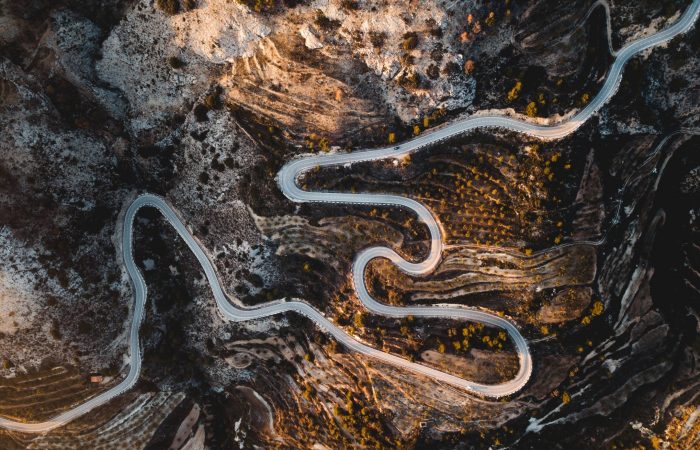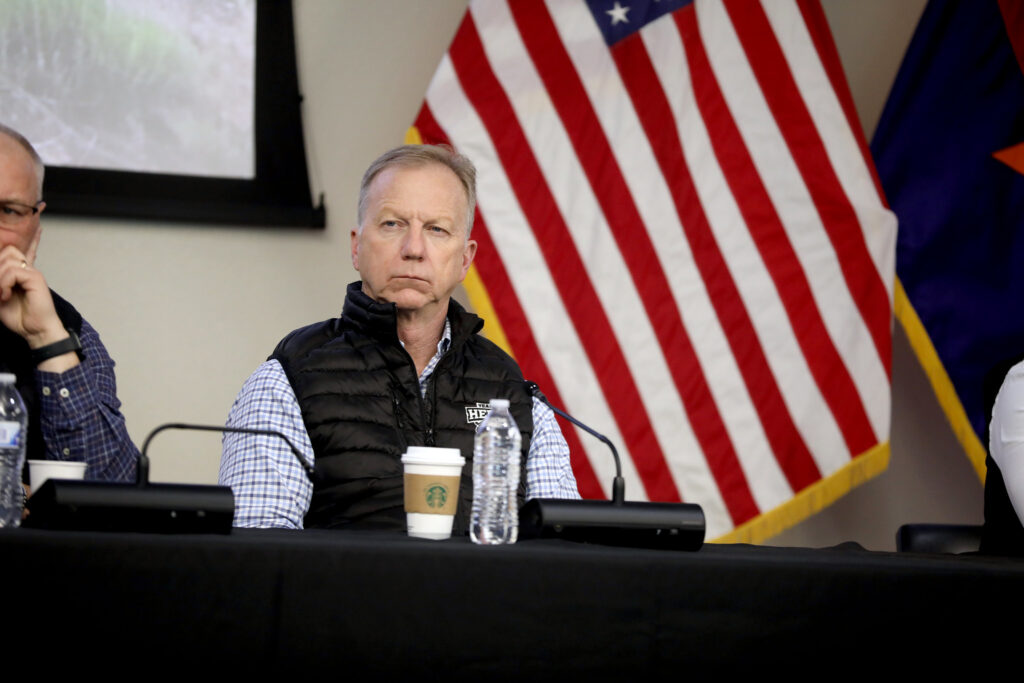The United States and South Korea held the third meeting of the Extended Deterrence Strategy and Consultation Group (EDSCG), on September 16, 2022 in Washington. Attending for the ROK were First Vice Minister for Foreign Affairs Cho Hyun-dong and ROK Vice Minister of National Defense Shin Beom-chul, and for the US Under Secretary of State for Arms Control and International Security Affairs Bonnie Jenkins and Under Secretary of Defense for Policy Colin Kahl.
The EDSCG, a high-level consultation mechanism established in October 2016, last met in January 2018 in response to the sixth North Korean nuclear test. This third meeting was requested by the new ROK administration for a comprehensive discussion of strategy and policy issues pertaining to the Korean Peninsula, and with a view to enhancing the effectiveness of the ROK-US alliance.
Previously, at their summit meeting on May 21, 2022, US President Joe Biden and newly-elected ROK President Yoon Suk-yeol had committed the alliance to extended deterrence. President Yoon, from the political right-wing, takes a very different view of the geopolitical situation than his predecessor, Moon Jae-in: Yoon considers Moon’s policies toward North Korea and China to have been much too soft, and he now seeks to “repair” the ROK-US alliance and wants an unequivocal North Korean commitment to denuclearization.
Following the EDSCG meeting, a joint statement was released by the two defense ministries which reaffirmed the commitment of both the US and the ROK to use all available means to deter and contain North Korean nuclear and missiles threats. There was a specific response to the recent inflammatory North Korean rhetoric on nuclear weapons use, and to North Korea’s new nuclear policy law, taking a similar line to that articulated in the US Nuclear Posture Review published in 2020.
Significantly, besides the references to North Korea and the Korean Peninsula, the joint statement also mentioned “peace and stability in the Indo-Pacific region,” which makes clear that the discussions of the EDSCG also touched upon China in the context of the ongoing US-China strategic competition. Chinese analysts will also take note of the pledge to engage in “trilateral and multilateral cooperation with partners throughout the region.”
China will be concerned about the true purpose of the EDSCG meeting, which appears to be an essentially political initiative resulting from a presidential election, without substantial prior consultations between US and ROK defense ministries, and without any new ideas to bolster the policy of extended deterrence, which the US has espoused since 2013. China will surely understand the EDSCG meeting as part of the US efforts to contain Chinese power and influence, and specifically as a response to China’s “unlimited” strategic relationship with Russia.
The ROK has requested the US to permanently deploy strategic assets to Korea, which from the Chinese perspective would be a threatening escalation. The US has declined in principle to do this, and continues to maintain that its strategic assets, both visible and invisible, are best deployed when and where they are most needed, in response to situations as they arise. In the Korean context this means that North Korean nuclear and missile developments could trigger the deployment of appropriate US strategic assets, but a permanent deployment is not necessary to enhancing extended deterrence.
The new ROK administration clearly wants to distinguish its policies from those of the previous one by tilting more towards the US, but many working-level officers, both in the US and the ROK, are uncertain about the best policy on some sensitive issues: should the ROK join the CHIPS alliance, the IDEF, or QUAD Plus. Nevertheless, the ROK seems intent on closer cooperation with the US Indo-Pacific Strategy, and the US is happy for the ROK-US alliance to extend its commitment beyond the Korean Peninsula to regional and global security issues. From the US perspective then, the EDSCG meeting furthered the rules-based international order and helped deter Chinese expansionism and general bullying, especially about Taiwan. From the Chinese perspective, however, the EDSCG meeting implies that the ROK is joining US attempts to contain China in its own backyard.
The language of the joint statement from the EDSCG meeting is subtly unbalanced, often focusing on US commitments to extended deterrence by using the US as the subject of sentences, for example: “The United States committed to strengthen coordination with the ROK to continue to deploy and exercise strategic assets in the region in a timely and effective manner” and “The United States reiterated its strong support for the aims of the ROK’s Audacious Initiative” (offering generous economic assistance to North Korea in exchange for denuclearization). The Chinese will likely understand from this language that in return for this revitalized support the US obtained agreement from the ROK to become more involved in the US Indo-Pacific Strategy.
China had a good opportunity to raise its concerns about President Yoon’s security policies at a meeting held on September 16, 2022 in Seoul between Yoon and Li Zhanshu, China’s third most powerful official and Chairman of the Standing Committee of the National People’s Congress. Li led a 66-member delegation, including four ministers and three vice ministers. They visited Presidential Office in Yongsan and the National Assembly, to celebrate the 30th anniversary of the establishment of diplomatic ties this year. They discussed the dispute over the Terminal High Altitude Area Defense (THAAD) system, and also a possible visit by Chinese President Xi Jinping to Korea. Official Korean comments on Lu’s visit focuses on the terms “mutual trust” and “mutual respect,” which is another signal that Yoon wants to create more strategic autonomy for the ROK to reinforce its relations with the US.
President Yoon’s national security advisor, Kim Sung-han, a former vice foreign minister, is a major player involved with both Li’s visit and the EDSCG meeting. The US commitment to providing extended deterrence is a matter for the ROK’s Ministry of National Defense, not its Ministry of Foreign Affairs, but both ministries had some input to the EDSCG meeting. The ROK representatives at the EDSCG meeting visited the US Missile Defense Agency and also joint Base Andrews to tour a US Air Force B-52 strategic long-range bomber. Taking all these indications into account, China will conclude that the EDSCG meeting was primarily a political demonstration by the US and the ROK, to show that their military alliance is undamaged by the Trump/Moon years, and that they are on the same page about regional security.
North Korea was not the main focus of the EDSCG meeting, despite its new pro-active nuclear policy and law, since the US has many other issues in play, especially Putin’s War in Ukraine. At some point soon, however, the US will need to articulate more active and preemptive measures for extended deterrence. Kim Sung-han is really seeking something far more substantive than the ambiguous language of the joint statement which includes a series of vague expressions “the Alliance deterrence posture… the Alliance strategic readiness… the Alliance missile response capabilities and posture.” Moreover, there are other high-level meetings which will discuss extended deterrence: the Korea-US Integrated Defense Dialogue, the Military Committee Meeting between the Joint Chiefs of Staff, and the ROK-US Security Consultative Meeting. China will therefore have plenty of opportunities to respond, and will likely reserve its options for the present.
Indeed, China may wait for the actual implementation of extended deterrence before deciding what to do about it, and there are a number of policies the ROK is considering which may upset China.
First, the ROK Ministry of National Defense will increase its budget to buy more weapons and systems to support the US commitment to extended deterrence: SM-6 or SM-3 and upgraded Aegis missile defense system on KDX-3 batch 3 destroyers and next-generation DDX program.
Second, the ROK and Japan will hold a bilateral summit at the UN General Assembly, and this could lead to a significant reset of their difficult relations, and ultimately to closer security cooperation, which the US has long been urging.
Third, the ROK Navy’s bilateral naval drills next month with the supercarrier USS Ronald Reagan (CVN-76) in the East Sea/Sea of Japan may be followed by trilateral naval drills with the Japanese Maritime Self-Defense Force (JMSDF). The prior announcement of CVN-76’s port call at Busan is an unprecedented show of force: such visits are normally acknowledged after the fact.
Fourth, ROK naval vessels will probably participate in a Fleet Review hosted by the JMSDF, and this could be followed by bilateral naval exercises and visits to Japanese naval ports.
Fifth, the ROK Navy will also actively participate in various multilateral military drills, such as Exercise Malabar, involving India, the US, and Japan. More contentiously, the ROK Navy may participate in Taiwan-related defense cooperation.
Sixth, the ROK may announce its membership of the CHIPS alliance, and this will shed some light how the ROK envisages its contribution to the US Indo-Pacific Strategy.
In conclusion, for the ROK this EDSCG Meeting was about two issues: securing a firm US commitment to extended deterrence, and getting the US to explicitly support the Yoon administration’s Audacious Initiative. As for the Chinese response, it will be purely rhetorical for the present, as they await the specifics of extended deterrence and also how far the ROK goes in supporting the US Indo-Pacific Strategy.




